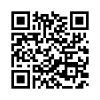Physical representation of female character in children’s novels by children
Sri Suharti, Universitas Bina Sarana Informatika, Indonesia
Setya Yuwana Sudikan, Universitas Negeri Surabaya, Indonesia
Abstract
Literary work is a form and result of creative works of art whose objects are humans and their lives use language as a medium. Especially children's literature by children, basically has its own advantages. The storyline is unique and interesting and builds the expression of the child's world. This study aims to describe the physical aspects of female characters in children's novels by children. This paper is a qualitative research with a descriptive approach. The approach used in this study is a psychological literacy approach. The technique of collecting research data was done by reading carefully accompanied by marking. The analytical technique used is a symbolic hermeneutic technique. Based on the results of the study, the findings of this study relate to the physical aspects of female characters in children's novels which include physical aspects in terms of gender, physical aspects in terms of age, physical aspects in terms of facial characteristics, the physical aspect in terms of the clothes used, and the physical aspect in terms of the state of the body (senses).
Key words: physical, representation, children's novel, and children's work
Keywords
Full Text:
PDFReferences
Aderia, P., WS, H. W. S. H., & Zulfadhli, Z. (2013). Ekranisasi novel ke film surat kecil untuk Tuhan. Jurnal Bahasa dan Sastra, 1(2), 46–59. DOI: https://doi.org/10.24036/89290
Apriliya, S., Hodidjah, H., & Kholifah, U. (2020). Pagi sampai malam hari: representasi latar waktu dalam cerita anak indonesia. Diksi, 28(2), 155–161. DOI: https://doi.org/10.21831/diksi.v28i2.33354
Burhan, N. (2013). Teori Pengkajian Fiksi Yogyakarta. Gadjah Mada University Press.
Djojosuroto, K. (2006). Analisis teks sastra & pengajarannya. Pustaka.
Fahs, B. (2014). Genital panics: Constructing the vagina in women’s qualitative narratives about pubic hair, menstrual sex, and vaginal self-image. Body Image, 11(3), 210–218. DOI: 10.1016/j.bodyim.2014.03.002
Harris, R. A. (1997). The literary hermeneutic of Rabbi Eliezer of Beaugency. The Jewish Theological Seminary of America.
Ibrasma, R., WS, H. W. S. H., & Zulfadhli, Z. (2013). Perbandingan cerita novel dengan film Di Bawah Lindungan Kabah. Jurnal Bahasa Dan Sastra, 1(2), 1–13. DOI: https://doi.org/10.24036/89230
Irfarettha, S., Abdurahman, A., & Nasution, B. (2013). Citra perempuan dalam novel Bunga-bunga Rindu karya Badri Wahab. Jurnal Bahasa Dan Sastra, 1(2), 111–125. http://repository.unp.ac.id/id/eprint/6063
Juanda, J., & Azis, A. (2018). Penyingkapan citra perempuan cerpen media Indonesia: kajian feminisme. LINGUA: Jurnal Bahasa, Sastra, dan Pengajarannya, 15(2), 71–82. http://eprints.unm.ac.id/id/eprint/15256
Klingler, D. R. (2021). Validity in the Identification and Interpretation of Literary Allusions in the Hebrew Bible. Wipf and Stock Publishers.
Lestari, P., Munandar, M. A., & Dwika, W. (2021). Modernization of women in politics in Semarang City. 6th International Conference on Education & Social Sciences (ICESS 2021), 272–276. DOI:%20https://doi.org/10.24036/89230
Muhsyanur, M. (2021). Ekspresi idealis pemeran utama dalam novel Tuhan, Izinkan Aku Menjadi Pelacur Karya Muhidin M. Dahlan. Jurnal Ilmiah Bina Bahasa, 14(01), 22–33. https://journal.binadarma.ac.id/index.php/binabahasa/article/view/1322
Muhsyanur, M. (2019). Analysis of postmodernism in Orang-orang Bloomington novel by Budi Darma. Magistra Andalusia: Jurnal Ilmu Sastra. https://doi.org/10.25077/majis.1.2.13.2019
O’Neal, E., Boy, T., Davis, B., Pritchett, K., Pritchett, R., Nepocatych, S., & Black, K. (2020). Post-exercise sweat loss estimation accuracy of athletes and physically active adults: a review. Sports, 8(8), 113. DOI: 10.3390/sports8080113
Prismanisa, L. (2021). The Representation of female character in Edge of Tomorrow (2014) film based on feminist film critics. Diksi, 29(1), 1–9. DOI: https://doi.org/10.21831/diksi.v29i1.33063
Purba, A. (2010). Pengantari ilmu sastra. USUpress.
Rokhmansyah, A. (2016). Pengantar gender dan feminisme: Pemahaman awal kritik sastra feminisme. Garudhawaca.
Sugihastuti, M. S. (2019). Wanita di mata wanita: perspektif sajak-sajak Toeti Heraty. Nuansa Cendekia.
Waynforth, D. (2001). Mate choice trade-offs and women’s preference for physically attractive men. Human Nature, 12(3), 207–219. DOI:%20https://doi.org/10.21831/diksi.v29i1.33063
Widyahening, E. T., & Wardhani, N. E. (2016). Literary works and character education. International Journal of Language and Literature, 4(1), 176–180. DOI: 10.1007/s12110-001-1007-9.
Wilson, D. (2011). Relevance and the interpretation of literary works. Observing Linguistic Phenomena: A Festschrift for Seiji Uchida, 3–19. DOI:10.13140/2.1.1224.5120
DOI: https://doi.org/10.21831/diksi.v30i1.45663
Refbacks
- There are currently no refbacks.

This work is licensed under a Creative Commons Attribution-ShareAlike 4.0 International License.
Jurnal Diksi is published by Faculty of Languages, Arts, and Culture, Universitas Negeri Yogyakarta. It is licensed under a Creative Commons Attribution-ShareAlike 4.0 International License. Based on a work at http://journal.uny.ac.id/index.php/diksi
Our Journal has been Indexed by:
Diksi Journal is published by the Faculty of Languages and Arts Universitas Negeri Yogyakarta in collaboration with Himpunan Sarjana Kesusasteraan Indonesia (HISKI)
Supervised by:






2.png)










